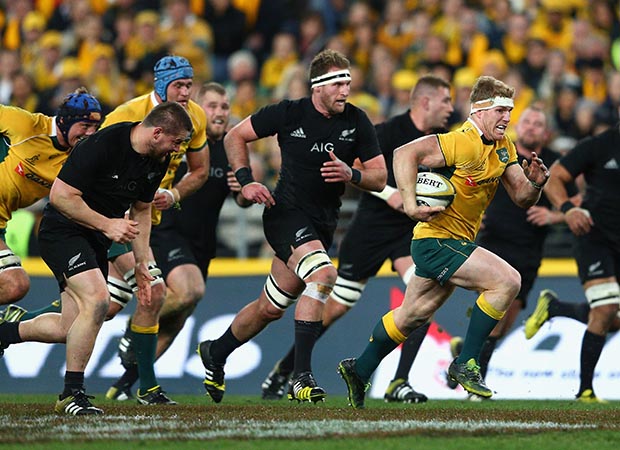 That’s it! All bets are off after last week’s results in the Rugby Championship as the favourites for both games failed to deliver the expected wins. Despite the fact both New Zealand and South Africa have, in all probability, one eye on the World Cup and, as such, were either resting players and trying new combinations, losing was definitely not part of the plan.
That’s it! All bets are off after last week’s results in the Rugby Championship as the favourites for both games failed to deliver the expected wins. Despite the fact both New Zealand and South Africa have, in all probability, one eye on the World Cup and, as such, were either resting players and trying new combinations, losing was definitely not part of the plan.
Until last week the All Blacks in particular were considered all but invincible and odds-on favourites (at least with the bookies) to win the World Cup, so
Australia‘s stunning victory not only surprised all but must have rung alarm bells in the English and Welsh training camps.
The innovative selection of two open-side flankers paid dividends for the Australians at the breakdown and gave them a base from which they could launch their backs. They have always been innovative in the back-row, partly because they have always struggled in the front-row.
In the Eighties they used to drop the scrum after the ball was hooked to allow the back-row to break to either assist in attack or defence, the next innovation was the non-committed openside who would help set up a ruck or maul, but break early so they could join the midfield to create an overlap or extra defender.
This latest innovation of two open-sides, Michael Hooper and David Pocock, has actually been borrowed from France or, to be more precise, Toulon, where Juan Martin Fernandez Lobbe and Steffon Armitage showed during last season’s Top14 the advantage at breakdowns of having two.
As the game has evolved, the need for big, powerful No.8s has become less pressing, particularly as most of the midfield backs are all pretty much the size of a big back-row player.
That has made defences harder to break and changed where you can create the best attacking opportunities. What is becoming more important is the ability to control breakdowns and broken field play as early ball allows the likes of Jamie Roberts, Mathieu Bastareaud, Sonny Bill Williams and, possibly, Sam Burgess to run against a broken defence.
The question for Australia’s opponents is, do you fight fire with fire, or do you continue with ‘a traditional’ combination?
For England, that is an even bigger question as they currently only have one true openside, Calum Clark, in the squad. Captain Robshaw has done a fantastic job and has made the openside berth his own but he is more of a destructive player than creative and as last weekend showed the extra pace to the breakdown enabled Hooper and Pocock to dominate that area against the legend that is Richie McCaw.
A bigger worry will be how well the Australian front-row performed, matching the All Blacks and even getting the occasional nudge. As the man with the whistle was our own Wayne Barnes, who seemed quite content in how the Aussies scrummaged, I can only assume they have made great improvements to how they played in the last series against England and Wales and that would be an additional worry for both.
Given a stable scrum and the advantage of twin opensides, the Aussies would have the platform to attack England and Wales in areas where they traditionally dominate, leaving the lineout as the only area where they could set-up their set-piece attacks.
The continuing Burgess experiment raised questions. It is slightly unfair on the likes of Henry Slade and Danny Cipriani, whose chances of making the final squad, will depend quite heavily on how well Burgess plays if he is continued to be selected.
Logic says that if you wanted to give young Slade a chance of proving his worth you would have put an experienced player beside him. The same would apply to Burgess who would have benefitted from the familiarity of his club fly-half, George Ford, inside him.
In many ways Stuart Lancaster, despite his early comments that Burgess would have to earn his place in the squad, has given the player unprecedented largesse in bringing him to England’s World Cup party with yesterday’s selection based very much on a ‘suck it and see’ philosophy with no real answers until Lancaster cuts to his final 31.
























Pingback: ผลบอล